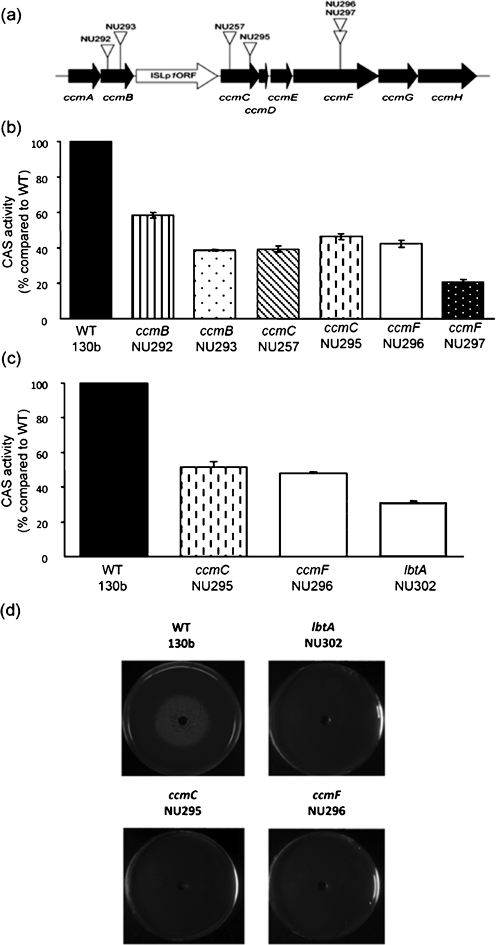Fig. 1.
Legiobactin production by L. pneumophila wild-type and ccm mutants. (a) The region of the L. pneumophila chromosome containing the ccm locus. Horizontal black arrows depict the relative sizes and orientation of the eight ccm genes (i.e. ccmA–ccmH) in strain 130b. The white horizontal arrow denotes the insertion sequence element between ccmB and ccmC (Viswanathan et al., 2002). The vertical arrowheads point to the locations of the KmR insertion in six ccm mutants. (b) CAS activity of the ccmB, ccmC and ccmF mutants compared to wild-type 130b. The CAS values are the means and standard deviations from duplicate cultures. The results presented are representative of at least three independent experiments. (c) CAS activity of the ccm mutants compared to an lbtA mutant. In (b) and (c), the CAS activities of the various ccm mutants were significantly less than that of wild-type (Student's t-test, P<0.05). In (c), the CAS activities for the ccm mutants were not significantly different from that of the lbtA mutant (P>0.05). (d) Siderophore biological activity of wild-type and mutants. We plated approx. 105 c.f.u. of feoB mutant legionellae onto non-iron-supplemented BCYE agar and a centre well was filled with a supernatant sample obtained from deferrated CDM cultures of wild-type 130b, lbtA mutant NU302, ccmC mutant NU295 and ccmF mutant NU296, as indicated. After 5 days, the growth of the bacteria was recorded. The results shown are representative of at least three experiments. Although not shown here for the sake of space, ccmB mutants NU292 and NU293, ccmC mutant NU257 and ccmF mutant NU297 also lacked siderophore biological activity.

